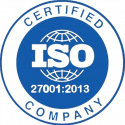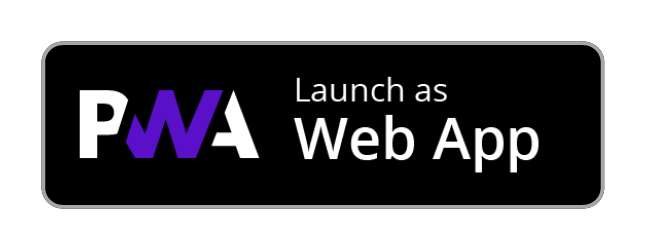TRACKKI's eAuction App
ENSURING TRANSPARENCY...
WHAT IS eAUCTION?
An eAuction is a transaction between sellers (the auctioneers) and bidders (suppliers in the business-to-business scenarios) in an electronic marketplace.
It can occur business-to-business, business-to-consumer, or consumer-to-consumer, and allows suppliers to bid online against each other for contracts against a published specification.
This kind of environment encourages competition, resulting in goods and services being offered at their current market value.
Monitor bids by supplier
When the auction is live, an easy way to track bids by suppliers is to view the information in chart form. Bids are plotted on the chart by time and value to clearly show the history of all bids from each supplier in the auction.
Live monitoring and analysis
With real-time data and in-depth analysis, you can stay on top of your electronic auction processes and make informed business decisions without delay. For instance, you can see how much each bid can save you against historical price or weigh your options by applying points based on elements of evaluation.
Easy set up
Designed with users in mind, our eAuction system is extremely intuitive and easy to use. You can quickly create and tailor an auction event using as much or as little information as you need, to ensure that your suppliers are fully aware of exactly what they need to provide. You can even use event templates or clone previous events for repeating auctions.
The benefits of eAuctions for buyers
An e-auction provides procurement professionals with competitive prices for their products, pitching the suppliers directly against each other to see who can offer the lowest prices. It also streamlines the procurement process and saves time since each supplier cannot submit a full proposal.

Cost savings
Time savings translate directly into cost savings. According to Sanmarket, there was a savings of 6.88% on average across all categories by companies that used eAuction tools in the last quarter of 2022.
More efficient
There is no need to review full proposals from suppliers and evaluate each write-up.
Transparency
Time savings translate directly into cost savings. According to Sanmarket, there was a savings of 6.88% on average across all categories by companies that used eAuction tools in the last quarter of 2022.
Access to more suppliers
Online auctions provide access to a nationwide or worldwide pool of potential vendors. This can help negate supply chain problems experienced by using local suppliers.
Process standardization
Buyers benefit by having standard methods to procure materials, leading to more predictable spending cycles.
The benefits of eAuctions for suppliers
E-auctions are open, allowing smaller businesses to compete and suppliers to compete in new sectors. A winning bid can lead to more business, as most buyers will look to source their ‘non-core’ products from their existing supplier.
Reduced transaction costs
Suppliers can list items for bid with a low fee per auction and realize a higher profit margin.
Access to new markets
Vendors can reach potential buyers they may not have been able to with traditional auctions.
Leveled playing field
Smaller purchasers can work with suppliers they may not have been able to do business with and gain a competitive edge.
Transparency
All buyers are informed and have the same opportunities to bid on items, satisfying regulatory compliance requirements regarding impartiality and fairness.
Common challenges within manual supplier auctions
Time-consuming
Manual auctions take a lot of preparation time and energy to organize materials, arrange for an auction venue, and create disruption in a team’s workflow.
It can be time-consuming for buyers, who may travel to a supplier to bid on their items.
Moving the auction to an online platform reduces the manual labor needed for suppliers to offer their items for sale and is more convenient for buyers to review items that may meet their needs.
Limited participation
Supplier auctions will have limited participation because of the time and cost involved in the bidding process.
Limited participation generally means that overall bids will be lower since there is less competition, and buyers will factor their expenses into what they are willing to bid on lots.
eAuctions reach a wider audience and will bring a wider range of participants, including smaller businesses that might not otherwise be able to compete with their larger counterparts.
Manual auctions, while attempting to provide a level environment for all participants, need to meet the goal of transparency better.
There are many opportunities to provide insider information to individual bidders or create unfair bidding situations.
On the other hand, eAuctions deliver auctions on an online platform where all communications are open and available to all participants.
Increased costs
Manual auctions will increase costs across the board. Businesses must factor in preparation, management, and labor costs that will eat away at a manual auction’s profits.
Some businesses may turn to a third-party auction house to oversee auctions. However, this comes at a price, as a large percentage of money brought in may go to covering the auction company’s services.
Frequently asked questions about eAuctions
An eAuction is a transaction between sellers and bidders on goods or services online in an electronic marketplace.
Bidders compete against one another, and the highest bidder receives the items for sale. Businesses may use this procurement method to purchase raw materials or components for their supply chain.
To ensure proper security and integrity in an eAuction, never share login information with unauthorized personnel.
Ensure all communications between suppliers and buyers happen within the online auction platform.
eAuctions should be used only if there are intentions of giving business to one or more participants. The seller should not conduct an electronic auction only to get the best prices from the market for research.
An electronic request for information (eRFI) is a better method for fact-finding than insincere auctions that waste participants’ time.
eAuctions work very similarly to their manual counterparts. Goods or services are placed for sale in the electronic marketplace. An amount of time is allowed for interested parties to review the items and place bids.
Depending on the auction rules, a seller selects from the bidders, or the highest bidder automatically wins the products or services up for sale.
Shipping arrangements and other details are carried out as set in the auction rules.
While there are many similarities between traditional procurement and eAuctions, key differences exist.
Online auctions are not handled face-to-face, which creates a more anonymous bidding process.
The buying process is concentrated over a short time which may need to be consistent with a company's standard procedures.
eAuctions tend to have a wide reach to attract potential buyers, leading to higher sales prices for sellers.
About Us
Certified Organisation
Also achieved the International Organization for Standardization (ISO) certification for Quality Management System (QMS): ISO 9001:2015 and Information Security Management: ISO/IEC 27001:2013 which is the most rigorous global security standard for Information Security Management Systems (ISMS).



Contact Us

Head Office,
INDIA
#301, 5th Floor,
14th B Cross, 7th Main,
6th Sector, HSR Layout,
Bengaluru - 560102.
Karnataka. INDIA.

Branch Office,
INDIA
Old No .94,New No.71,
Balan Nagar, Peelamedu,
Coimbatore - 641004,
Tamil Nadu, INDIA.

Regional Office,
BANGLADESH
#No: 532/3, Road: 11,
Baridhara DOHS,
Dhaka-1206,
BANGLADESH.

Write to us @
contact@trackki.com

Call us @
(+91) 948 948 3883



